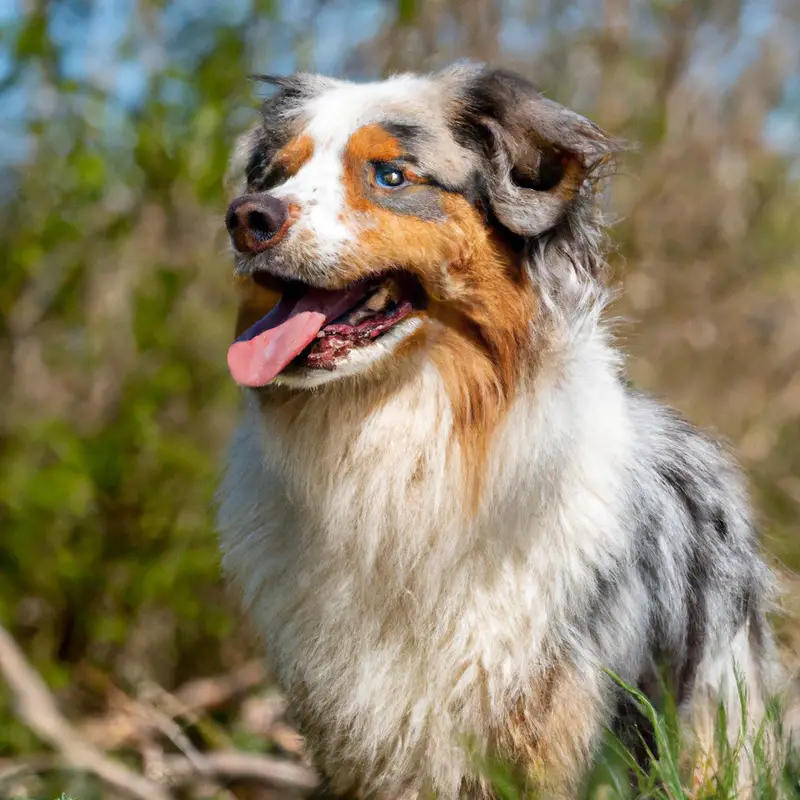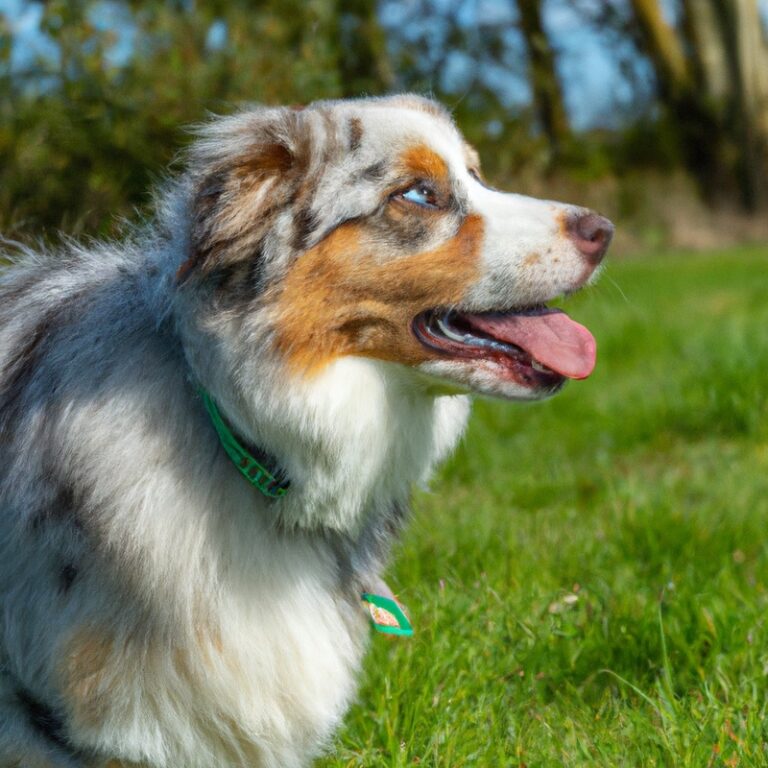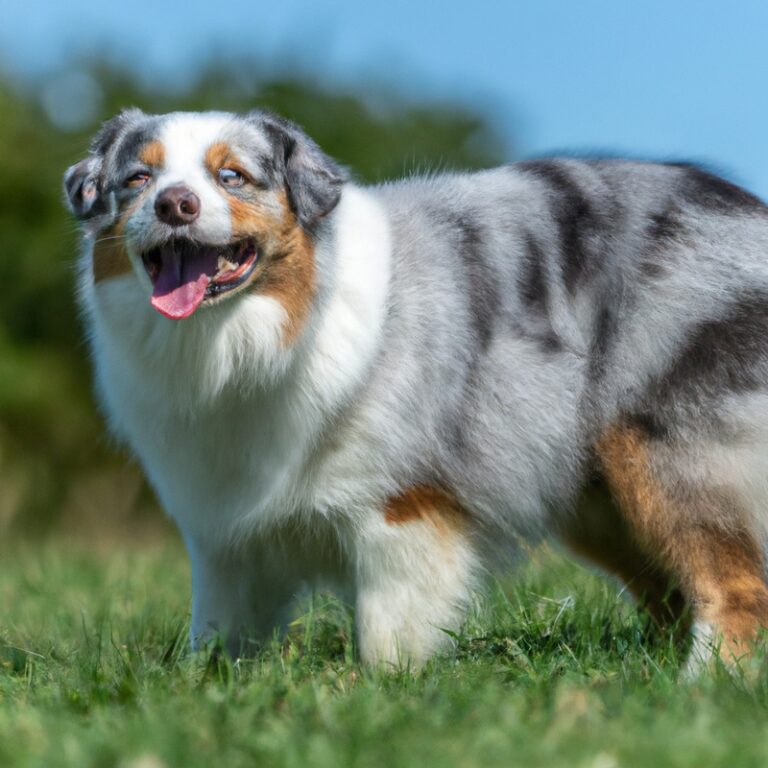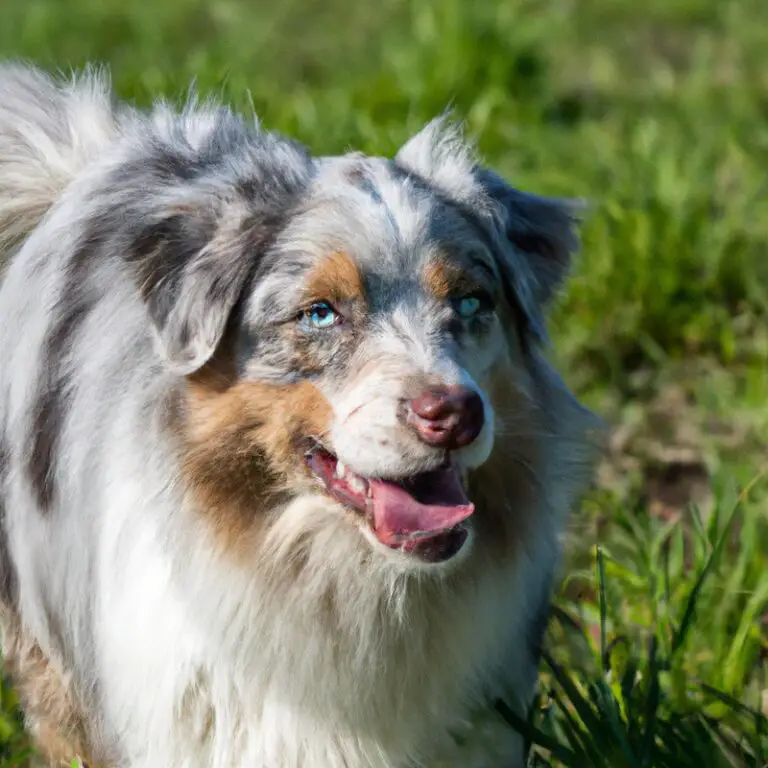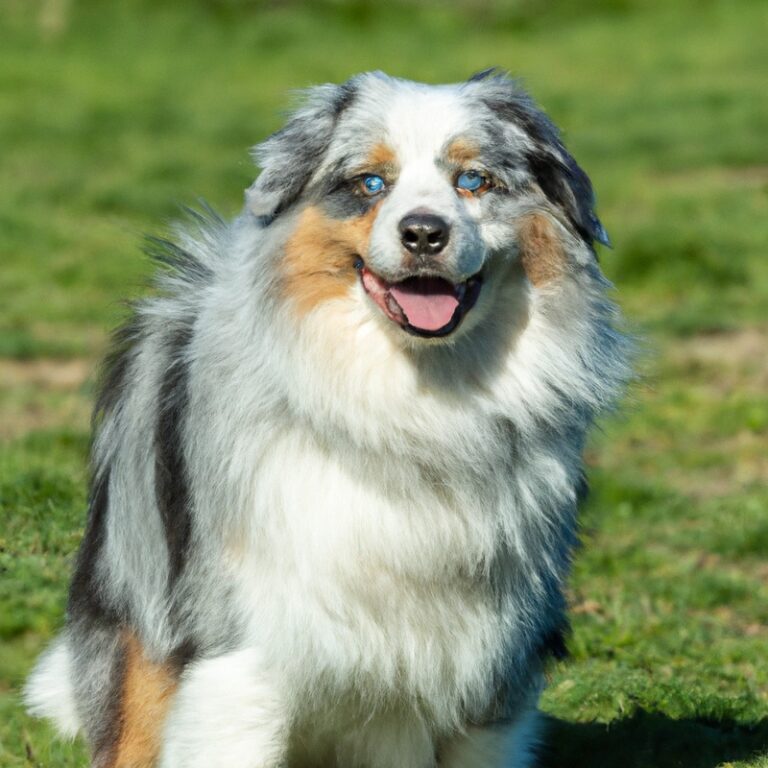Can Australian Shepherds Be Trained To Be Competitive In Flyball?
Key Takeaways:
- Australian Shepherds can be trained to compete in flyball.
- They are intelligent and agile, making them well-suited for the sport.
- Proper training and socialization are important for their success.
- Australian Shepherds may excel in flyball with consistent practice and positive reinforcement.
Are you a proud owner of an Australian Shepherd and wondering if they have what it takes to dominate the thrilling world of flyball? Well, you’ve come to the right place! As an experienced trainer and enthusiast, I can confidently tell you that Australian Shepherds have the potential to excel in this fast-paced canine sport.
Flyball combines speed, agility, and teamwork, and these intelligent and athletic dogs are more than up to the challenge.
In this article, we will explore the ins and outs of flyball, delve into training techniques specifically tailored for Australian Shepherds, address potential challenges, and share valuable tips to help you and your dog reach competitive heights in this exciting sport. So, let’s dive in and discover how Australian Shepherds can rise to the top in flyball!
| Pros | Cons | |
|---|---|---|
| Intelligence | Highly intelligent breed, quick to learn and follow commands | Intelligence can sometimes lead to stubbornness or independent thinking |
| Energy Level | Well-known for their high energy levels and stamina | Require regular exercise and mental stimulation to prevent boredom |
| Agility | Natural agility and athleticism, beneficial for flyball competition | May require additional training and practice to master flyball-specific skills |
| Trainability | Australian Shepherds are generally eager to please and respond well to positive reinforcement training methods | May become easily distracted by their surroundings and require consistent training |
| Temperament | Typically friendly, loyal, and highly sociable dogs | May exhibit herding instincts during flyball, which can affect focus and performance |
| Health | Australian Shepherds are generally healthy dogs with few breed-specific health issues | Regular veterinary care and proper nutrition are essential for maintaining their health and performance |
Understanding the Flyball Sport
What is Flyball?
Flyball is a fast-paced dog sport that involves teams of dogs racing against each other. The objective is for each dog to jump over a series of hurdles, trigger a spring-loaded box to release a tennis ball, catch the ball, and then return over the hurdles to their handler.
The team that completes this sequence in the fastest time wins.
It’s an exciting and energetic sport that tests both the dog’s speed and agility, as well as their ability to follow commands and work as part of a team.
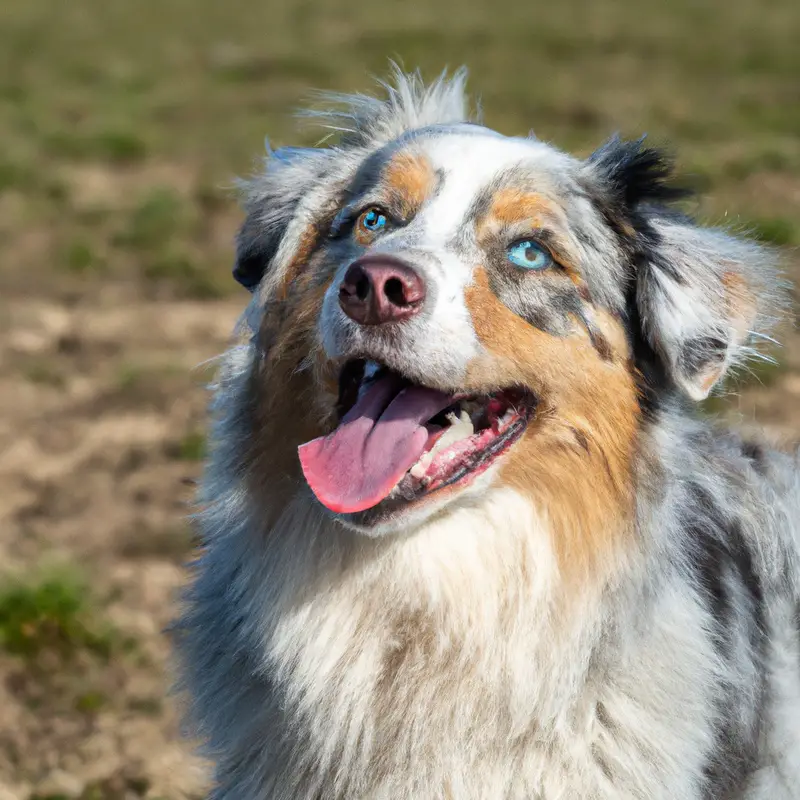
How Does Flyball Work?
Flyball is a fast-paced and exciting dog sport that involves teams of dogs racing against each other. The objective is for each dog to run down a course, jump over hurdles, grab a ball from a box, and then return back to the starting line.
Sounds simple, right?
Well, the twist is that the dogs must complete this course in relay fashion, with four dogs on each team. The next dog in line cannot start until the previous dog has crossed the finish line.
The team that completes the course with all four dogs the fastest wins the race.
The course is set up in such a way that each jump is the same height, and the box that holds the ball is designed to release the ball when the dog pushes a panel with its paw. This adds an element of speed and challenge to the game.
Flyball requires not only speed but also precision and teamwork.
The dogs need to have good obedience training, as they must wait their turn and perform their tasks flawlessly. The handlers also play a crucial role in communicating with their dogs and guiding them through the course.
Overall, flyball is an entertaining and thrilling sport that showcases the athleticism and intelligence of dogs.
It’s a fantastic way to bond with your furry friend and have a great time together. So, if you’re looking for a fun and competitive activity to enjoy with your Australian Shepherd, give flyball a try!

The Role of Australian Shepherds in Flyball
Australian Shepherds play a significant role in the sport of flyball. These dogs are known for their intelligence, agility, and trainability, making them great competitors.
One of the main roles of Australian Shepherds in flyball is as the “height dog.” They are responsible for jumping over the hurdles at the end of the course and hitting the box that releases the ball.
This requires speed, accuracy, and precision, all of which are qualities that Australian Shepherds possess. Additionally, Australian Shepherds are often utilized as the “anchor” dog in a flyball team.
The anchor dog waits at the start line and provides support and stability to the team.
They need to have excellent focus, as they are responsible for catching the ball and bringing it back to the handler. Australian Shepherds excel in flyball due to their natural herding instincts, which make them highly attentive and responsive to their handlers.
Their high energy levels and drive to work also contribute to their success in this sport.

Training Australian Shepherds for Flyball
Assessing the Dog’s Fitness Level
Assessing the Dog’s Fitness Level is an essential step before training your Australian Shepherd for flyball. You want to ensure that your dog is physically capable of handling the intense demands of this sport.
Start by observing their energy levels during daily activities and playtime.
A fit dog will have good stamina and be eager to engage in physical exercise. Additionally, you can assess their cardiovascular fitness by going for runs or engaging in vigorous games of fetch.
It’s important to consult with your veterinarian to rule out any underlying health issues and to receive guidance on maintaining your dog’s fitness level throughout their training.
By paying attention to your Australian Shepherd’s fitness, you can set them up for success in flyball and help them reach their full potential.
Basic Commands and Obedience Training
Basic commands and obedience training are essential for preparing Australian Shepherds for flyball competition. These commands lay the foundation for communication and control between the handler and the dog.
I recommend starting with the basics such as sit, stay, come, and heel.
Teaching these commands involves consistent repetition and positive reinforcement. Use treats or praise as rewards when your dog correctly follows a command.
Be patient and keep training sessions short to maintain your dog’s focus and enthusiasm.
It’s also important to practice training in different environments to ensure that your Australian Shepherd can follow commands even in distracting situations. This will come in handy during flyball events where there will be a lot of noise and other dogs.
Remember, training is a continuous process.
Practice regularly and reinforce the commands consistently. This will help your Australian Shepherd develop good obedience skills and increase their chances of being competitive in flyball.
So keep training, and enjoy the journey with your four-legged partner!
Building the Dog’s Speed and Agility
When it comes to building your Australian Shepherd’s speed and agility for flyball, there are a few key strategies to keep in mind.
- Incorporate sprinting exercises: Regular sprinting can help improve your dog’s speed. Set up short distances and encourage your Australian Shepherd to run at full speed. Gradually increase the distance as they get stronger and faster.
- Agility training: Agility exercises such as hurdles, tunnels, and weave poles can help your dog become more nimble and quick on their feet. Set up an agility course and practice with your Australian Shepherd regularly.
- Interval training: Incorporate interval training into your dog’s exercise routine. This involves alternating between short bursts of intense activity and periods of rest. For example, have your dog sprint for 20 seconds, then allow them to rest for 10 seconds before repeating.
- Cross-training: Engage your Australian Shepherd in a variety of activities that promote overall fitness and coordination. Swimming, hiking, and playing fetch can all contribute to building their speed and agility.
- Proper nutrition: Ensure that your dog is getting a balanced diet that supports their energy needs and muscle development. Consult with your veterinarian to determine the best diet for your Australian Shepherd.
By regularly incorporating these strategies into your training routine and providing proper nutrition, you can help your Australian Shepherd build their speed and agility for flyball. Keep in mind that consistency and patience are key, and always prioritize your dog’s safety and well-being during training sessions.
Challenges and Considerations for Australian Shepherds in Flyball
Energy and Exercise Requirements
Energy and exercise requirements are crucial for Australian Shepherds in flyball. These dogs are active and high-energy, so regular exercise is essential to keep them physically and mentally stimulated.
Daily walks and playtime are a good start, but they also benefit from more intense activities like running and agility training.
In addition to physical exercise, mental stimulation through training and interactive toys is important to satisfy their intelligence and herding instincts. Providing a variety of activities will help keep them happy and focused in flyball competitions.
Remember, a tired and well-exercised Australian Shepherd is a happy and trainable one.
Dealing with Australian Shepherds’ Herding Instincts
Australian Shepherds have a strong herding instinct, which can pose challenges in flyball training. To deal with this instinct, it’s important to redirect their focus and provide alternative outlets for their energy.
Incorporating commands like “Leave it” and “Stay” to control their urge to herd can be helpful.
Providing mental stimulation through puzzle toys or obedience training can also divert their instinctual behaviors. Consistent and positive reinforcement is key in reinforcing desired behaviors and discouraging unwanted ones.
Patience and understanding are crucial in effectively managing their herding instincts.
Communication and Coordination with Teammates
Communication and coordination with teammates is essential in flyball, especially when it comes to achieving success in the sport. As a flyball team, it’s crucial to establish clear communication channels and develop a strong sense of trust and understanding among teammates.
This includes effective verbal communication, hand signals, and body language.
During a flyball race, good communication helps ensure smooth exchanges between teammates, as they pass the baton to each other. Clear verbal cues and hand signals are used to indicate when the next teammate should approach the box and when to release the dog.
Coordination among teammates is equally important as it allows for efficient and seamless transition during the race.
This involves precise timing, synchronizing movements, and being aware of each other’s positions on the track. By working together as a team and practicing regularly, teammates can develop a strong bond and a shared understanding of each other’s roles.
To improve communication and coordination, it’s essential to practice drills and exercises specifically designed to enhance teamwork.
These can include relay races, agility courses, and various training exercises that simulate race scenarios. By doing so, team members can develop a rhythm and become familiar with each other’s strengths and areas of improvement.
It’s also important to establish clear roles and responsibilities within the team.
Designating a team captain or a communication coordinator can help ensure that everyone is on the same page and that any issues or concerns are addressed promptly. Open and effective communication among teammates creates an environment where everyone can provide feedback, make suggestions, and work together to improve overall performance.
Potential Health Concerns for Australian Shepherds
Potential Health Concerns for Australian Shepherds include hip dysplasia, epilepsy, and eye issues such as cataracts and progressive retinal atrophy. These conditions can cause pain, discomfort, and even blindness in affected dogs.
Australian Shepherds are also prone to allergies, skin problems, and certain types of cancer.
Regular veterinary check-ups and preventative care are important to catch and manage these health issues early. Providing a healthy diet, regular exercise, and proper grooming can also help promote overall well-being for Australian Shepherds.
Tips for Achieving Competitiveness in Flyball with Australian Shepherds
Consistency and Positive Reinforcement
Consistency and positive reinforcement are key factors for achieving competitiveness in flyball with Australian Shepherds. When training your dog, it is important to be consistent with your commands and expectations.
This helps your dog understand what is expected of them and builds a strong foundation for their performance in flyball.
Positive reinforcement, such as treats, praise, and play, is another crucial element in training your Australian Shepherd for flyball. This method rewards desired behaviors and motivates your dog to continue performing well.
It creates a positive and enjoyable training experience for both you and your dog.
By using consistent commands and positive reinforcement, you are creating a clear and rewarding training environment for your Australian Shepherd. This helps them understand what is expected of them in flyball and encourages them to perform at their best.
Remember to always be patient and understanding with your dog during the training process.
Every dog learns at their own pace, so it’s important to celebrate their progress and avoid punishment or negative reinforcement. Consistency and positive reinforcement not only enhance your dog’s performance in flyball but also strengthen the bond between you and your Australian Shepherd.
This connection and trust will ultimately contribute to their success in competitive flyball events.
Focus on Building Strong Bonds with Your Dog
To achieve competitiveness in flyball with Australian Shepherds, it is crucial to focus on building strong bonds with your dog. The bond between you and your dog is the foundation for success in any dog sport, including flyball.
Building a strong bond creates trust, enhances communication, and strengthens teamwork.
Spend quality time with your Australian Shepherd outside of training sessions. Engage in activities that promote bonding, such as playing, grooming, and cuddling.
This helps to develop a deep connection and mutual understanding between you and your dog.
Communication is key in flyball. Practice clear and consistent communication with your Australian Shepherd to ensure they understand your commands and cues.
Use positive reinforcement techniques, such as treats and praise, to reward your dog when they exhibit desirable behaviors during training and competitions.
Incorporate regular training sessions into your routine to maintain and improve your dog’s skills. Consistency is essential in training, as it reinforces the behaviors you want from your Australian Shepherd.
Consistently practicing flyball-specific exercises and drills will help your dog develop the necessary speed, agility, and focus required for competition.
Lastly, prioritize the overall well-being of your Australian Shepherd. Regular exercise, a balanced diet, and routine veterinary care are crucial for their physical and mental health.
A happy and healthy dog is more likely to perform well in flyball and enjoy the experience.
By focusing on building a strong bond with your Australian Shepherd, you will not only enhance your teamwork in flyball but also deepen the relationship you share with your furry companion. Enjoy the journey together and have fun competing in this exciting sport!
Regular Training and Conditioning
Regular training and conditioning are essential for achieving competitiveness in flyball with Australian Shepherds. By consistently practicing flyball drills and exercises, you can improve your dog’s speed, agility, and accuracy in retrieving the ball.
Regular training sessions also help maintain your dog’s focus and ensure they understand and respond to commands quickly and efficiently during flyball competitions.
Conditioning exercises, such as cardio workouts, strength training, and flexibility exercises, help build your dog’s stamina, endurance, and overall physical fitness, enabling them to perform at their best during flyball races. Prioritize regular training and conditioning sessions to help your Australian Shepherd excel in the sport of flyball.
Preparing for Competitive Flyball Events
Preparing for competitive flyball events is key to improving your chances of success. Here are some important tips to help you get ready:
1. Practice, practice, practice:
Put in the time to train and condition your Australian Shepherd for flyball. Regular training sessions will help improve their speed and agility, as well as their understanding of the game.
2. Focus on teamwork:
Flyball is a team sport, so it’s essential to develop strong communication and coordination with your teammates. Work on strategies and practice together to ensure smooth transitions and efficient timing during the races.
3. Get familiar with the rules:
Make sure you fully understand the rules and regulations of flyball competitions. This includes knowing how to properly handle and pass the ball, as well as understanding the timing and order of each dog’s turn.
4. Build your dog’s confidence:
Confidence is key in flyball. Take the time to build your Australian Shepherd’s confidence by gradually increasing the difficulty of the tasks and rewarding them for their progress.
This will help them perform better under pressure.
5. Prepare mentally and physically:
In addition to physical conditioning, it’s important to prepare your dog mentally for the high-energy environment of flyball events. Introduce them to the sights, sounds, and distractions they might encounter during competitions.
6. Stay positive and have fun:
The most important aspect of flyball is enjoying the sport with your dog. Stay positive, celebrate achievements, and have fun throughout the training process and during competitions.
This will create a positive bond between you and your Australian Shepherd.
Final Verdict
Australian Shepherds can absolutely be trained to be competitive in flyball. With their high energy levels, athleticism, and intelligence, they are well-suited for this fast-paced sport.
By assessing their fitness levels, providing basic obedience training, and building their speed and agility, Australian Shepherds can excel in flyball.
However, it’s important to consider their energy and exercise requirements, herding instincts, and potential health concerns. With consistency, positive reinforcement, strong bonds, and regular training, Australian Shepherds can become formidable competitors in this exciting sport.
So, if you’re willing to put in the effort, training an Australian Shepherd for flyball can be a rewarding and successful endeavor.

